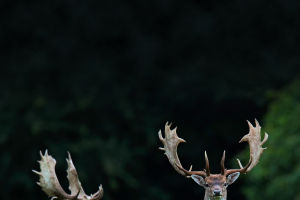The American Kestrel is a small but mighty predator found in North America. It is the smallest falcon among its North American relatives, ranging in size from that of a blue jay to that of a mourning dove.
Female Kestrels are slightly larger than males and can be differentiated by their rusty brown wings, while the wings of males are slate blue. Males have one black bar on their tail feathers, while females have several.
One of the most interesting things about Kestrels is their ability to see ultraviolet light. This trait is found in many diurnal hunting birds, and it helps them track their prey as they hover in the air. It is speculated that this ability also helps them detect the urine that small animals leave as they scurry along.
Kestrels are family-oriented hunters. When young Kestrels start to hunt, they are accompanied by their parents, which gives them an opportunity to become skilled hunters before leaving the nest.
This is important since many young Kestrels die of starvation. Unlike other species, there isn’t a lot of bickering among Kestrels. Siblings often perch and fly together before leaving the nest.
Kestrel chicks are ravenous and eat twice as much food in a day as an adult bird. This means that these tiny nestlings eat two to three mice or voles a day, which is especially surprising considering their tiny size.
The female will stay with the chicks during the first 12-14 days after they hatch to help regulate their body temperature and protect them from predators. During this time, the male will bring food for her and the nestlings.
Kestrels do not build nests. Instead, they nest in cavities in trees, abandoned crow's nests, rock crevices, and any other nook or hollow they can find, whether natural or man-made. They do not have the ability to create their holes, so they either need to find an unused one or evict the current resident. American Kestrels have been seen chasing bluebirds and squirrels out of their nests.
Unlike some birds, Kestrels do not keep a neat nest. When they defecate, they typically do so up against one side of the nest. The nest also fills with leftover scraps of fur and bones from the nestlings. Despite the messy nests, Kestrels will return to the same nesting sites year after year.
In medieval falconry, the Kestrel was reserved for the knave, reflecting its lowly status. However, this small but mighty predator may not be impressive in terms of size, but it makes up for it with its other attributes.
One of the most colorful of all raptors, the male Kestrel's slate-blue head and wings contrast elegantly with his rusty-red back and tail, while the female has the same warm reddish on her wings, back, and tail.
the American Kestrel is a fascinating predator with unique traits and behaviors. Its ability to see ultraviolet light, family-oriented hunting, and messy nests make it stand out among other birds of prey. Despite its small size, it has a fierce intensity that reflects its powerful and mighty spirit.


